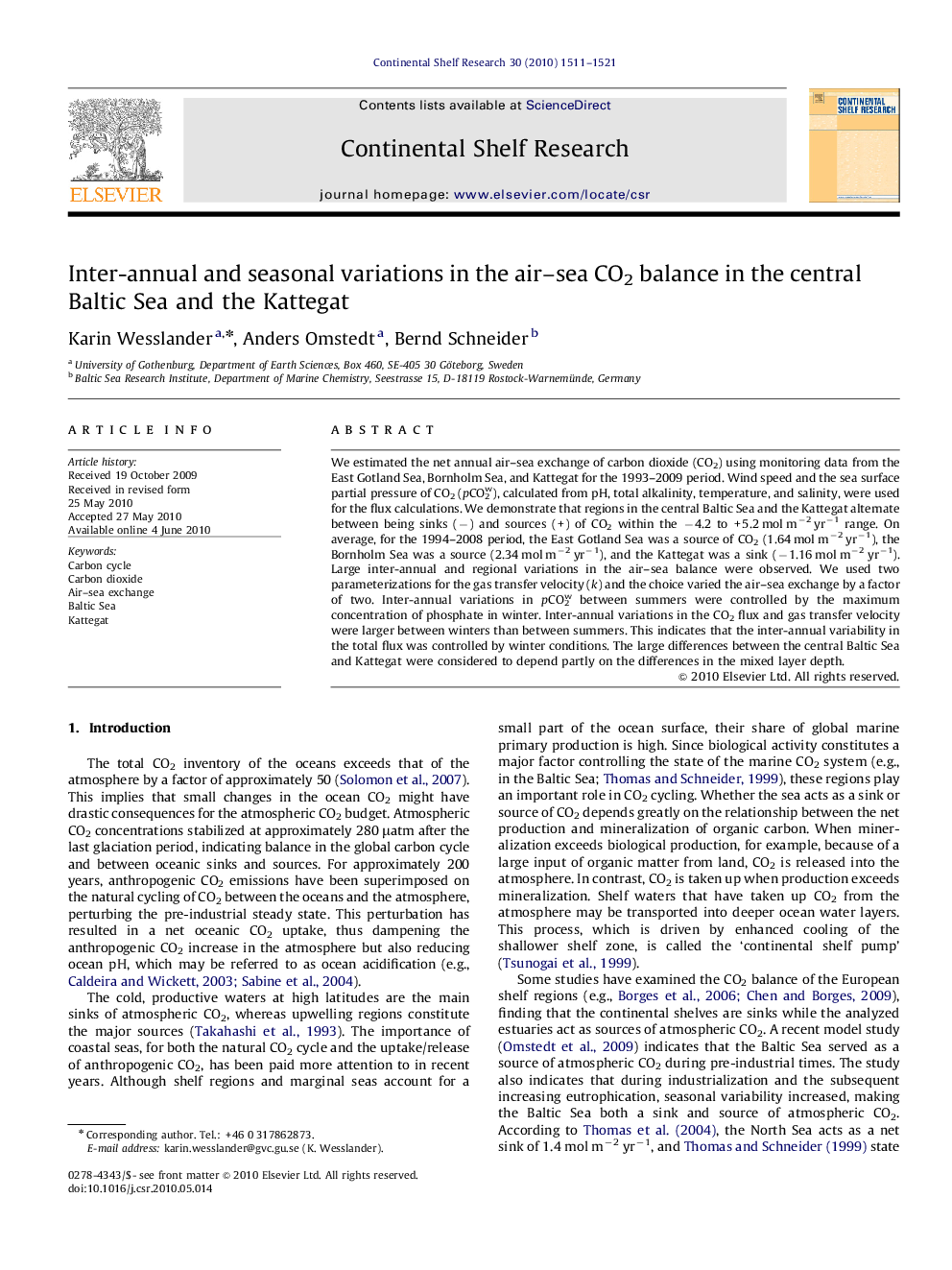| Article ID | Journal | Published Year | Pages | File Type |
|---|---|---|---|---|
| 4532971 | Continental Shelf Research | 2010 | 11 Pages |
We estimated the net annual air–sea exchange of carbon dioxide (CO2) using monitoring data from the East Gotland Sea, Bornholm Sea, and Kattegat for the 1993–2009 period. Wind speed and the sea surface partial pressure of CO2 (pCO2w), calculated from pH, total alkalinity, temperature, and salinity, were used for the flux calculations. We demonstrate that regions in the central Baltic Sea and the Kattegat alternate between being sinks (−) and sources (+) of CO2 within the −4.2 to +5.2 mol m−2 yr−1 range. On average, for the 1994–2008 period, the East Gotland Sea was a source of CO2 (1.64 mol m−2 yr−1), the Bornholm Sea was a source (2.34 mol m−2 yr−1), and the Kattegat was a sink (−1.16 mol m−2 yr−1). Large inter-annual and regional variations in the air–sea balance were observed. We used two parameterizations for the gas transfer velocity (k) and the choice varied the air–sea exchange by a factor of two. Inter-annual variations in pCO2w between summers were controlled by the maximum concentration of phosphate in winter. Inter-annual variations in the CO2 flux and gas transfer velocity were larger between winters than between summers. This indicates that the inter-annual variability in the total flux was controlled by winter conditions. The large differences between the central Baltic Sea and Kattegat were considered to depend partly on the differences in the mixed layer depth.
